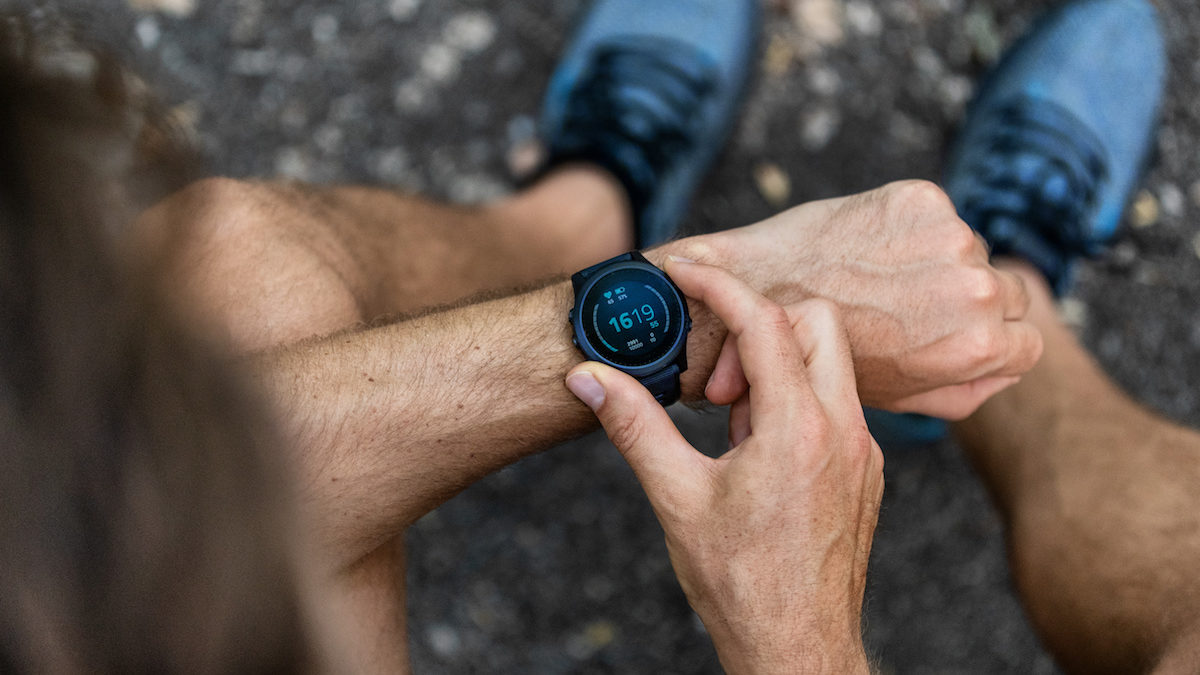The Power of NEAT: How Spontaneous Fidgeting Could Be Helping Control Your Weight

From EPOC and Carb Cycling to your Basal Metabolic Rate and the importance of BCAAs, here at Form we’re dedicated to dissecting the intricacies of sports science and nutrition, so you can better understand the way your body works and fulfil your physical and mental potential. One topic we’ve yet to cover, which might certainly interest those finding themselves in a lockdown-induced workout lull, is NEAT, the acronym for Non-Exercise Activity Thermogenesis.
Here then is Form’s head of nutrition, Dr. Adam Collins, on everything you need to know about the bodily function including how to measure the process and the possibilities of boosting it.
What Is NEAT?
Non-Exercise Activity Thermogenesis may sound very complicated but is best understood when you appreciate what constitutes your total energy expenditure, i.e. what dictates the total number of calories you burn per day. Your metabolic rate accounts for between half to 75 percent of your total energy expenditure and is essentially the number of calories you need to stay alive (heart rate, breathing, organ function, etc).
This is mainly a function of body size (how much of you there is to metabolise), as well as age and gender. Another 5-10 percent of your total represents the specific energy cost of digesting, absorbing, and storing the energy you eat and drink. However, the most variable component of your energy expenditure is physical activity, i.e. everything beyond rest. This can account for differences in energy expenditure up to 2000 kcal per day between two people of the same size, age, and gender.
The Importance of NEAT
When we look at physical activity, we need to appreciate two things. Firstly, whenever we contract muscle we generate heat as a by-product, hence why we sweat during exercise. As such, physical activity is associated with thermogenesis (literally heat generation). Secondly, physical activity can be split into two main categories. Exercise Activity Thermogenesis (EAT) refers to physical activity performed for sport, fitness, or health, e.g. what you do down the gym or for your chosen sport.
This is very easy to define, obvious, and easy to quantify. It is what can clearly distinguish athletes and sports professionals from the rest of us. Non-Exercise Activity Thermogenesis (NEAT) accounts for all the other physical activities that are not exercise, but constitute anything that is not rest.
This includes typical daily activities such as washing, cooking, eating, cleaning, typing at a computer, walking, gardening, baking, DIY, etc, etc. In addition, small subtle movements such as fidgeting, rocking, pacing, foot-tapping, etc. also add to your NEAT. All of this may not seem like much by itself but add it all together and for most people (including avid gym-goers) the majority of your physical activity is accounted for by NEAT rather than EAT.

The importance of NEAT should not be underestimated and can lead to significant differences in energy expenditure, as stated earlier. A simple illustration of this is just occupation; a truck driver without the option of moving will expend far less than a farmer or builder. Moreover, given many of us are now working from home, we are spending far less NEAT as we are no longer commuting to work, let alone discretionary movement around an office or place of work.
Not only this, NEAT can also serve as a way of helping people maintain energy balance. In this regard, it has been suggested that spontaneous adjustment of NEAT is part of our energy homeostasis. More of this later.
How Can We Measure It?
The most interesting feature of NEAT is not necessarily the voluntary aspects of it, governed by conscious behaviour, but more the potential spontaneous nature of it. Can NEAT be used as a way of “wasting” energy at times when you need to? For example, eating too many calories could be sensed and trigger a homeostatic response to get you to “move more” through spontaneously increasing NEAT.
In this way, it could explain how NEAT is a key tool in our ability to maintain weight better. The difficulty is trying to measure it as, unlike exercise, many of these activities are small and discreet, and difficult to capture.
James Levine is a researcher who has made his name with NEAT and developed a novel use of a series of accelerometers (similar to what you get in smartwatches and step counter apps), to try and capture movement that could be NEAT. He put these together in a wearable set of underpants which he appropriately coined “fidget pants” to measure NEAT.
An alternative way of estimating NEAT is by deduction. We can measure total energy expenditure over several days in free-living people through the gold standard method of doubly labelled water. Once we have the total, we can subtract a person’s known metabolic rate and EAT, leaving that unaccounted for as NEAT.

Do Some People Have A Naturally Higher Rate?
A landmark study of his really illustrated the potential power of NEAT for weight control. He overfed participants 1000 kcal per day extra and noticed that some people gained all the weight expected, but others not very much. When looking at NEAT, those that gained the most weight did not increase their NEAT. In fact, some even decreased NEAT and became less active.
Whereas those that gained the least weight, spontaneously increased their NEAT, in some cases almost approaching the equivalent of an extra 1000 kcal per day. Although NEAT is a relatively new phenomenon, these findings also give us insight into some unexplained findings from older overfeeding trials from the 1990s and earlier, where there seemed to be an unaccounted-for number of calories that could not be explained by weight gained or other measures.
The concept that some people have “better” NEAT than others is an interesting one and has been proposed as an explanation for how some people are better at maintaining weight than others. Anecdotally, we probably all know people who have been described as “not being able to sit still”, “fidgeting all the time”, or who are “always doing stuff”, whether that is DIY, cleaning or other physical hobbies.
These people could be what we called “NEAT activators”, programmed to use NEAT as a solution to problems. This has been used to explain how we may have dealt with periods of feasting and famine. When confronted with a famine or lack of food, NEAT activators used physical activity to move to somewhere else to seek food or hunt wider afield. In contrast NEAT conservers, hunkered down and tried to conserve energy.
Fast forward to a western society now where people are constantly exposed to an energy excess (too many calories), it seems logical that it is the NEAT activators who are better at increasing NEAT to offset any surplus.

Can We Do Anything To Maximise Our NEAT?
This is a good question and it would conceptually make sense if we could but is difficult to prove. One potential influence on NEAT is EAT, the other component of physical activity that represents exercise done for fitness or sport. On the one hand, when you look at the short term (1-2 days) and you get someone who is sedentary to increase their EAT (i.e. do some exercise), it has been shown that their NEAT decreases by way of compensation.
Hence, they don’t end up burning any more calories. However, there is some suggestion that if you look beyond the day of EAT itself and look over the following days, NEAT has been shown to increase in response to the exercise intervention.
So perhaps EAT causes NEAT? Now this does make some sense and is not down to anything in terms of calorie burning, but other benefits of exercise associated with adaptive changes and fitness. Indeed, we have observed for some time that ‘fitter’ people are generally better at maintaining weight, and better at compensating short term overfeeding, particularly in terms of appetite and control of calorie intake. It seems logical to assume then, that NEAT could also be playing a key role in people who are following an active lifestyle and are metabolically fit.


















